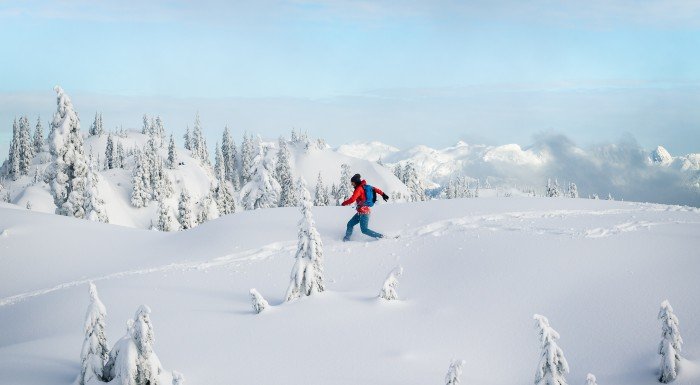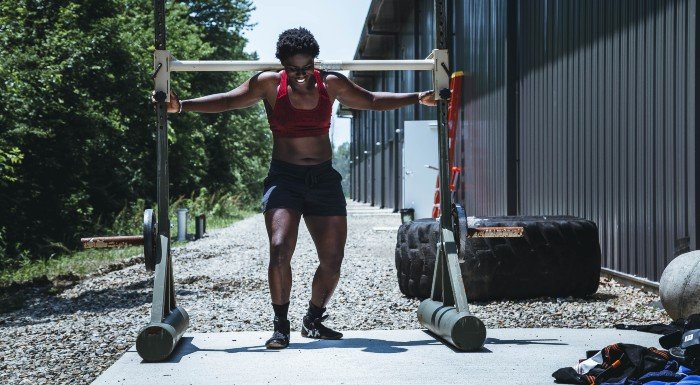In addition to the opportunity to wear your favorite Christmas sweater on the way to the gym, it is difficult to see any other advantages when we exclude those little winter pleasures.
There is also, it is true, the advantage of post-workout nutrition consisting entirely of chocolate coins throughout the month of December, but let’s be serious: this is not a benefit for training, we were going to do that anyway.
It may be a surprise to discover that there are unique physiological benefits of training in colder climates. Read on and you may find here a source of extra motivation to get out of the tracks of a warm and comfortable bed on a cold morning to go training.

Activate fat that burns… fat?
It sounds a little like an explanation from a mad scientist, but it is in fact one of the ways our bodies have to adapt to exposure to cold.
There are two types of fat, or adipose tissue, in the body: white and brown adipose tissue.
The first is the primary form of energy storage, and the second, which stores lower amounts of fat, can be activated to oxidize fatty acids in order to maintain body temperature. When we are exposed to the cold, the body is put in an increased effort to maintain the temperature through the activation of the brown adipose tissue (among other processes). This activation means that we are using more stored fat for fuel.
Prolonged exposure to cold even increases the conversion between these two types of fat. More brown adipose tissue ultimately means more fat oxidation, which can contribute to your January efforts when trying to lose the extra pounds left over from parties.

Burning fat during parties
Another of the most notable advantages of an increased proportion of brown fat is that its activation leads to an increase in energy consumption. So, as with accumulated fat, the more brown adipose tissue we have, and the more we activate it, the more calories will be expended.
But this is not the only way to burn more calories when exercising in cold weather.
In addition to the obvious cold shivers (which can burn a significant number of calories on their own), we also tend to move more. In fact, training with exposure to cold can increase energy expenditure by up to 30% above the typical value for a given person!

What about the income itself?
The impact on performance will, of course, depend not only on the individual and their sensitivity to cold, but also on the temperature itself. Too cold a temperature will eventually be detrimental to performance (and potentially dangerous to exercise).
However, there may be some unexpected muscle adaptations to exercise in the cold. For example, it can improve our stamina. Blood flow is more difficult in colder climates, so the heart has to work harder. For a healthy person, this can make the heart stronger and potentially help prepare it for improved performance when warm weather returns.
Additionally, exposure to cold can stimulate angiogenesis (the physiological process by which new blood vessels are formed from pre-existing vessels). An increase in the number of blood vessels means more bulky transport to and from the muscles, which in turn represents benefits for physical performance. In addition, it can also contribute to an improved recovery capacity.

The importance of exercise to fight D.A.S.
D.A.S., or seasonal affective disorder, is a form of depression that occurs with the change of season (being more often associated with winter).
Although there is no certainty as to why this condition occurs, it is believed to be somehow associated with changes in our biological clock, disruption of schedules and changes in exposure to light.
About 1 in 15 people are severely affected by D.A.S., which affects 3 times more women than men.
Exercise is a tool with demonstrated relevance for the treatment of depression, which was also reflected in studies that evaluated its effect on the symptoms of D.A.S.
When done regularly, exercise has demonstrated benefits in the mental health of people who experience this condition and can be an excellent tool to use during the winter months, to ensure that our Christmas spirit does not fade during the holidays.
Final Message
We are sure it will come as no surprise: exercise remains one of the most important pillars of a healthy lifestyle, and possibly even more so during the winter months.
With the worries about weight that usually appear at this time of year, as well as the increased risk of mental health problems, exercise is the perfect solution. Not only that, but for people more oriented to the performance issue, it can even have significant advantages for results and recoverability, which will influence your training in spring and summer.
As always, we recommend that you maintain an active lifestyle, but safely. The roads can be slippery and the days are getting darker. Train intensely, train intelligently and, above all else, train safely.

